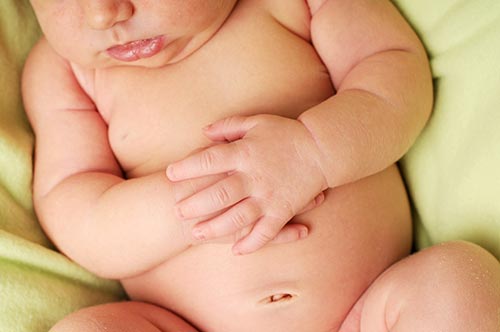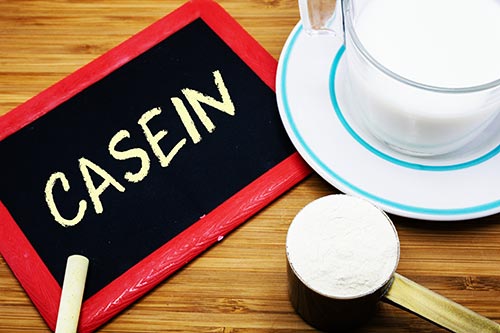
Communities and the Infant Gut Microbiome
Baby’s Maturing Gut
The gut is the site of the immune system. While baby is born with some protections from mom, these are temporary and he must develop his own active immunity over the early months and years. The immune factors in human milk prolong the passive immunity provided by mom as baby’s own immune system matures. Because colic is thought to be related to gastrointestinal complaint, breastfeeding could potentially be protective.
The last few years have seen a surge in research about the infant microbiome – the collection of microorganisms that make up your baby’s body. After birth, breastmilk serves to colonize the baby’s gastrointestinal system with beneficial bacteria. Maternal diet, genetics, birth method, antibiotics, infant feeding and more can influence this microbiome development, which will influence health over a lifetime.
Breastmilk can also play a more direct role in building baby’s immune system. With over 600 species of bacteria, breastmilk has a microbiome of its own. Amazingly, human milk also provides food for baby’s gut bacteria. Human milk oligosaccharides are indigestible by baby, but are believed to be the fuel for the beneficial bacteria that keep baby healthy. Researchers have found that nearly a third of the bacteria in baby’s gut come from breastmilk, with another 10 percent coming from mom’s areolar skin.
It is important to note that the predominant bacteria in breastfed babies are different from the most commonly occurring ones in formula fed babies. Studies have found that while there is some overlap, breastfed babies had more Proteobacteria and Bacteriodetes, while formula fed babies had a more Firmicutes and no Bacteriodetes. This may be the basis for the health difference in the two groups of infants, and might eventually be a diagnostic tool practitioners can use when treating a fussy baby. When a baby has colic, however, researchers have found the GI tract contains higher levels of Proteobacteria and exhibits less bacterial diversity than babies without colic. In addition, levels of certain Bifidobacterium and Lactobacilli were found to be related to colic – the higher the levels the less crying (and vice versa). So the strains of bacteria in your baby’s microbiome can be contributing to dysbiosis (or imbalance) in the gut, leading to the seeming abdominal pain associated with colic. More research is needed into this close relationship between the microbiome, the gut and signaling mechanisms in the brain.
Coping With A Colicky Breastfed Baby
Because sucking, and breastfeeding specifically, are comforting, continuing to put your baby to the breast frequently during the days and weeks of colicky behavior can help. Some babies, however, have two minds about the breast – they want to nurse, but at the same time they seem in pain and don’t want to feed. This can be very challenging for a new mom. Offer the breast for short, frequent feedings, and find ways of comforting your baby away from the breast.
Colic is extremely difficult for new parents – it can magnify the effects of sleep deprivation, disrupt parental circadian rhythms, cause symptoms of depression, affect the ability to concentrate, and, ultimately, negatively impact parent-child interactions. Breastfeeding, however, may mitigate the sleep effects and help parents cope better with infant crying by providing melatonin through breastmilk. Because infants do not secrete their own melatonin, and since the hormone relaxes smooth muscles, breastfeeding may alleviate the GI symptoms of colic while at the same time helping baby to sleep.

Fig. 11: Cow’s milk protein also known as “casein”
Is Baby Allergic To Mom’s Milk?
While breastmilk’s ingredients are typically protective for the breastfeeding baby, sometimes substances in mom’s milk can cause reactions in baby. For example, bovine IgG, a cow’s milk protein, levels were higher in the milk of mothers with colicky babies that those with babies not exhibiting signs of colic. Other protein foods (eggs, wheat, soy, other meats, peanuts, fish and shellfish) can also cause problems when susceptible babies are exposed via breastmilk. If you or your partner have a family history of food allergies, limiting the foods that cause your reactions may be helpful. While studies don’t always agree on which foods should be eliminated, researchers have found that elimination diets can often be a starting point in the treatment of colic in the breastfed baby.
Because of the long half-life of the cow’s milk protein in mother’s milk, it can take quite a while to eliminate it fully from mom’s body and her breastmilk. Eliminating all sources of casein and whey is necessary. Some mothers even need to eliminate beef. If this alleviates your baby’s colic symptoms, you may need to avoid the offending foods until your baby is older.
If eliminating dairy doesn’t help, you may need to determine if other foods are affecting your baby. The best way to do this is by keeping a diary of everything you eat as well as your baby’s symptoms. Once you see a pattern in foods and reactions in your baby, you can work to eliminate them from your diet to determine if that’s the cause if your baby’s colicky behavior. If your baby reacts to multiple foods, or if you cannot pinpoint a single cause of the reactions, you may need a more restrictive elimination diet. While these diets can be difficult, they are the best way of identifying and eliminating allergens, and thus improving baby’s symptoms.
Sometimes lactose intolerance is thought to be the cause of a baby’s fussiness and excessive crying. Lactose is the main sugar in human milk, and an enzyme in baby’s gut, called lactase, processes it. Occasionally, babies don’t make enough lactase to deal with the dose of lactose they receive, which can cause excess gas (and crying). Occasionally babies experience lactose overload as a reaction to oversupply of milk (where babies tend to get less fat rich milk) or to an insult to baby’s gut (from allergies or medications). The usual regimen for treating this type of lactose problem is to offer short, frequent feedings and to be sure the baby finishes the first breast first. Breast compressions and switching sides several times in each feeding may also increase the amount of fat-rich milk baby receives, helping him to better manage the lactose load.
 Canada
Canada South Africa
South Africa UK
UK EU & Int
EU & Int Ireland
Ireland Australia
Australia Brazil
Brazil New Zealand
New Zealand
